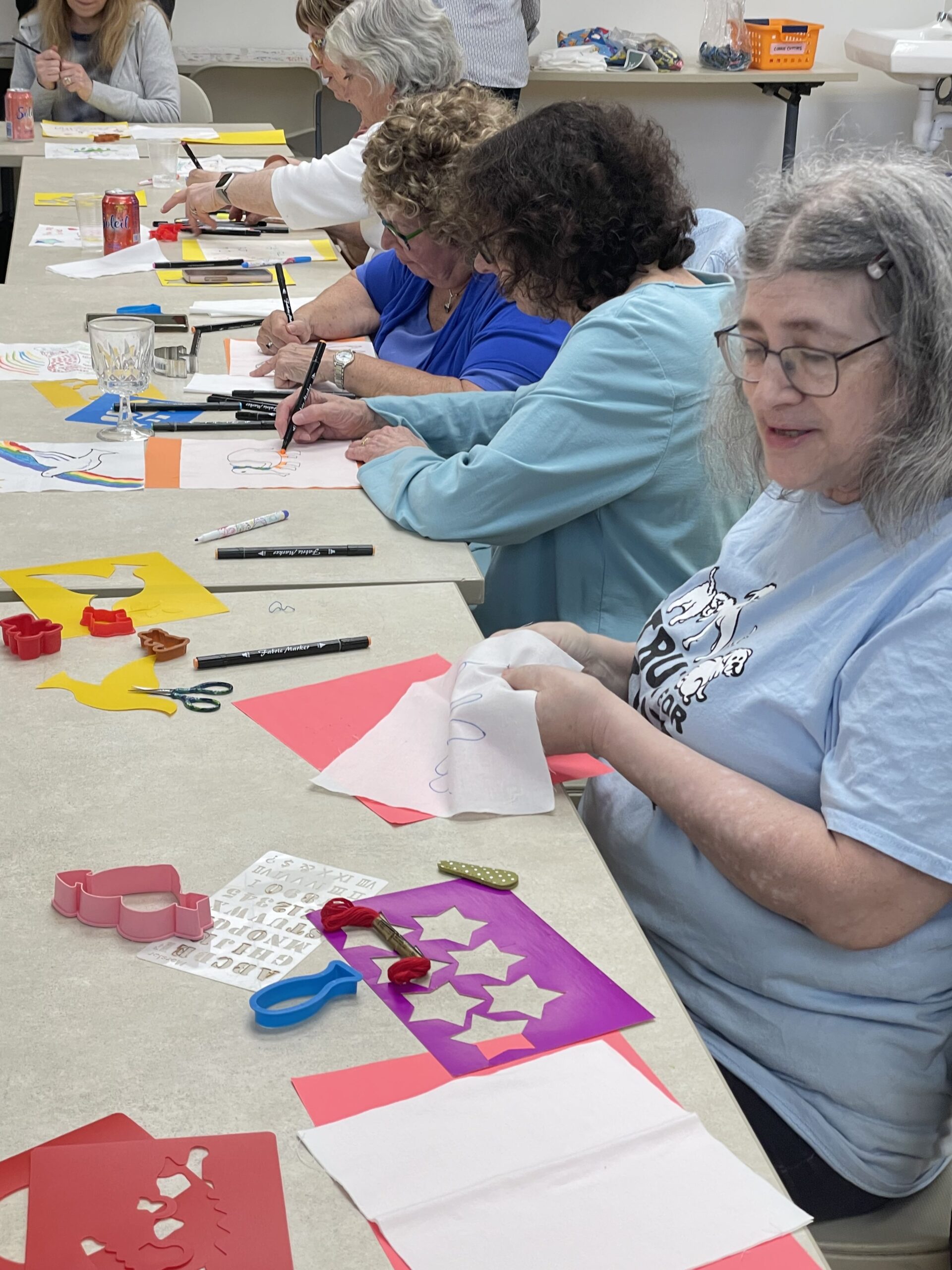B’haalot’cha: What Do We Weave and What Do We Carry?
When I moved to Santa Fe in 2021, the Museum of International Folk Art was hosting an exhibit called From Combat to Carpet: The Art of Afghan War Rugs. Starting in the late 1970s, following the Soviet invasion of Afghanistan, women artisans incorporated war-related imagery into their handwoven rugs – portraits of generals and soldiers, falling bombs incorporated into paisley patterns. In one corner of the room, they had a collaborative piece where visitors to the exhibit could add strands to a woven rug. The exhibit talked about how these rugs are a sign of resilience and innovation. Craft skills are infinitely portable. If people are displaced, they might lose their material goods, but the skills are something they can resume in a new location. These war rugs are innovative and responsive to the tastes of what will sell. The exhibit notes say, “The emergence of war-related imagery in Afghan rug design has clearly aided the economic survival of area weavers and displaced craftspeople through years of armed conflict and cultural disruption. What war rugs mean to individual weavers is less understood. Are war rugs a celebration of modernity or a rejection of war? Are they a witness to shared trauma or a commercialization of violence? Are they testaments to ingenuity and a spirit of survival? Perhaps they are all of these things at once.”
This week’s Torah portion got me thinking about the role of craft and art in the context of conflict. B’haalot’cha is named for how to mount the lamps in the Mishkan. It talks about how to build the lamp stand of fine hammered work. It also talks about the Israelites preparing for war, who will lead the troops, how they will march, and how they will be called to order by two expertly ornamented silver trumpets. The Mishkan is able to be disassembled and transported so that its beauty and the Holiness within can accompany them wherever they march onward. As the ancient Israelites prepare for war, they also prepare their craft and plan how they will continue to carry it with them.
Robert Alter notes that after “the visual pageantry of the Tabernacle furnishings, and the deployment of the tribal troops with their banners, sound enters the text- in essence, musical flourishes, a pageantry of sound.” Although war is awful and painful, and no good things come out of it, the human spirit still yearns for order and meaning. In war’s ugly shadow, we cling ever harder to the resilient scraps of beauty we can cobble together. We see it in this week’s Torah portion. We see it in Benjamin Britten’s War Requiem, an epic piece for two choirs, two orchestras, a pipe organ, and three soloists, which intersperses poetry by Wilfred Owen, who was killed in action one week before the armistice of World War One, with the text of the requiem mass. We see it in the installation of art created after October 7th that we hosted in the chapel a few months ago. Last week, the IDF recovered the bodies of Judith Weinstein Haggai and Gadi Haggai, who were murdered on October 7th and kidnapped to Gaza. Judith was a poet who frequently wrote haikus, and many of them have been circulated recently in her memory. One that was unfortunately prescient reads:
life so delicate
days of war, peace, sorrow, joy
let’s choose love
In “La Vie Boheme” from the musical Rent by Jonathan Larson, the artists proclaim, “The opposite of war isn’t peace, it’s creation!” When the world feels absolutely broken and shattered, when there is a distinct absence of peace, shalom, and wholeness, we can start piecing it back together through our acts of creativity. We recently had our first Creative Arts Shabbaton, where participants decorated squares of fabric which will be sewn into quilts for children who are seriously ill, traumatized, or otherwise in need by volunteers from Project Linus. Members of the choir recently participated in a shibori dyeing project so that they will have coordinated accessories to add to their uniforms when they sing. There is so much beauty just waiting to be created. If you have a creative practice, stick with it! If you don’t, try something new! Maybe try writing a haiku – a poem with three lines, of five syllables, seven syllables, and five syllables. A world at war needs war rugs and war requiems. It needs us to pick up the threads and weave them into works of art. We must continue to choose love, to create, and to show our ingenuity and spirit of survival.

